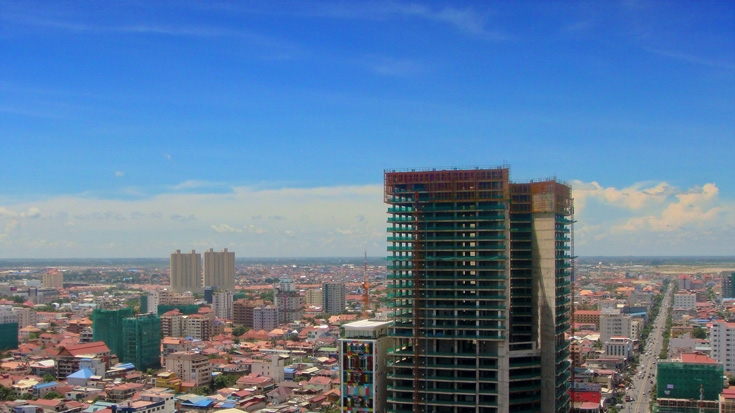Highlight:
- Although the usual drivers of growth remain, their relative weight has changed. Garments continue to be Cambodia’s key engine of growth, while construction overtook the decelerating tourism and crops sectors as the second most important growth driver.
- This year’s continued healthy economic growth is underpinned by stable external sector performance on the back of rising FDI inflows that help largely finance a slightly widened current account deficit contributing to an increase in international reserves.
- Though there has been a slight increase in inflation, price stability remains within acceptable levels fostering economic expansion and supporting poverty reduction.
- Private sector deposit growth has picked up swiftly thanks to renewed confidence on the economy, contributing to greater stability in the banking sector.
- Fiscal performance has been further strengthened thanks to improved revenue administration; providing additional financing to support rising essential public spending without undermining macroeconomic stability.
- Cambodia has joined the Olympians of growth. Cambodia has grown at a yearly average growth rate of 7.7 percent for two decades now making it the sixth fastest growing country in the world over that period. Cambodia’s high growth is all the more impressive because of its resilience - it has maintained a fairly constant growth over the period. This sets Cambodia apart from countries such as Equatorial Guinea, Liberia, Angola and Cape Verde that are among the top 5 fastest growing countries over the past 20 years but have not experienced such constant growth. It places Cambodia among a group of eight countries, the “Olympians of growth” with fast and resilient growth. Other regional countries in this select group are China, Lao PDR and Vietnam.
Outlook:
- The outlook for growth appears promising with renewed domestic political stability, strengthened recovery in the United States (US), and returning stability in Thailand all supporting GDP growth to reach 7.5 percent in 2015, similar to that of 2013.
- However, there are downside risks to forecast growth: potential renewed labor unrest, rainy season floods, the further dampening of rice prices and potential regional political uncertainty.
Emerging challenges and recommendations:
- How can Cambodia maintain and boost economic growth and reduce poverty further? The key challenge will be to stimulate the agricultural and tourism sectors once again:
- Rice production growth has decelerated since 2012 and given the land area constraint, its recovery will depend from now on more on increases in rice productivity and quality than on area expansion. In addition, improving rice milling and logistics costs will help Cambodia get closer to its one million rice milled export target.
- Improved road transportation, together with greater coordination of efforts between central and local governments, the private sector and local communities, would help promote diversification of tourist destinations beyond the Angkor Archeological Park to include beach areas and ecotourism.
- Facilitating the growth of the manufacturing sector will also be instrumental to maintain and boost economic growth. The forthcoming Investment Climate Assessment indicates that the key constraints for firms continue to be electricity cost and access, informal payments and uncompetitive practices. Special Economic Zones (SEZ), which were meant to provide an improved business environment, are not yet delivering the benefits expected by foreign investors. The present growth presents an opportunity to improve the business environment by addressing the high cost of electricity with transparent solicitation; continuing the automation of business processes; improving trade facilitation; increasing the attractiveness of SEZs; completing competition and investment laws that enhance the investment climate; and simplifying business registration. To help attract additional foreign investment relocating from more advanced economies in the region it is also important to maintain political stability and to reach a conclusive and transparent process in tripartite minimum wage negotiations for the garment sector.
- Safeguarding stability in the financial sector through enhanced banking supervision will help prevent a bubble in the construction and real estate sectors.
- More broadly, increasing capital investment, deepening structural reforms, and improving formal and vocational education will help Cambodia return to a higher growth path.
- The development of very specific reform agendas with targets linked to priority reforms and a strong monitoring framework would help enhance the effectiveness of government implementation.

